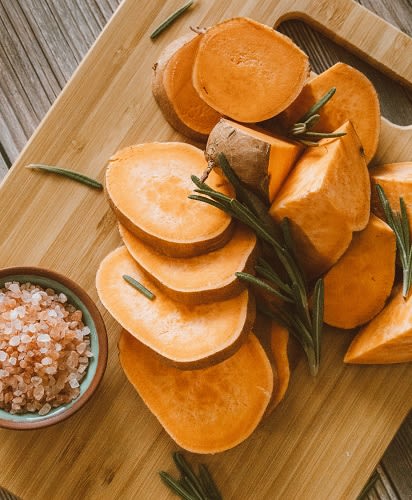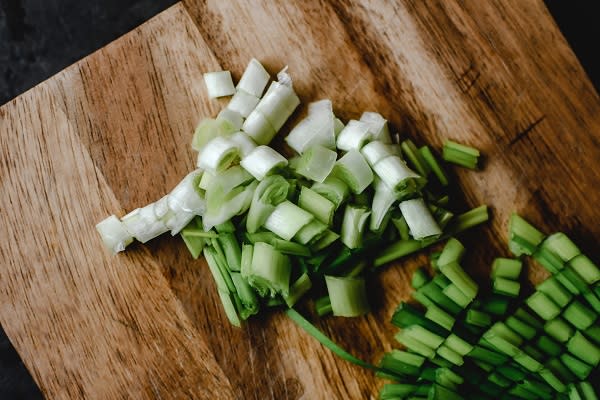The Similarities Between Chopping and Dicing
Put simply, both chop and dice mean cutting something large (meat, vegetables, etc.) into pieces. But here’s a good rule of thumb: Chopping calls for large, square(ish) chunks of meat, or vegetables, such as onions and potatoes, which are uniform in size, and about ½ to 1 inch per piece. Dicing, on the other hand, yields pieces slightly smaller than a chop—from ¼ inch to ½ inch (sometimes called a small chop)—requiring a bit more precision and practice. A small dice would be finer, still. (And there are plenty more types of knife skills that are helpful, of course.)
Whether you’re chopping or dicing, you’re aiming for roughly equal-sized pieces; this helps the dish in question cook at approximately the same speed, yielding consistent results. Imagine the melt-in-your mouth quality of the onions in a Creamy Pea & Asparagus Risotto—and how one larger, undercooked bite of onion could throw off the whole thing? You get the idea.
Both a chop and a dice will yield texture, and baseline flavor in most dishes. But adhering to a recipe’s call for shape and size will get you the closest to the recipe writer’s intended result.

When to Chop
A larger chop is appropriate for chunky stews, and soups, when you intend to see and experience the toothsome quality of the vegetables (as in a tagine, for example), or meat (think: beef stew). Anytime the vegetables or meat will cook for a fairly long time and begin to soften under heat, a chop should work.
How to Chop
Most vegetables organically start with a slightly rounded shape. For a chop, honoring these curved edges is usually fine. To begin, cut the vegetable into thick slices, then turn the slices 90 degrees and cut them into ½-, ¾- or 1-inch-thick sticks. Cut crosswise at even intervals (also ½, ¾, to 1 inch), to yield cube-shaped pieces, creating a rough (or large) chop.

When to Dice
These smallish, even pieces of vegetables or aromatics (including carrots, celery, and onion) are widely called for in all styles of cooking. In sauces, omelets, chilies, and soups like a minestrone, a dice is the perfect size. Generally speaking, the more pungent the vegetable (garlic, onions) the smaller the dice. You’ll see dice at work in recipes like Spicy Chorizo & Tomato Penne, where the tomatoes create an even canvas of flavor, without showing up too loudly in the finished dish. When in doubt, a dice will work in most recipes.
How to Dice
Square off your vegetables, giving yourself a little wiggle room here. There’s no need for perfection; you’re generally just trying to organize the vegetable to make cutting easier, and the finished result more consistent. Next, cut into rectangular slices, then slice into sticks, about the girth of a pencil (this cut is called a batonnet). Cut crosswise at intervals ¼- to ½-inch thick, creating a dice (equal-sized, small cubes). Relax into it and enjoy—you’ll gain precision and speed with time, and yield delicious results as you practice!









